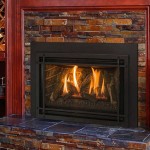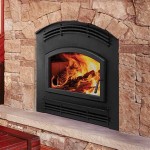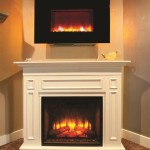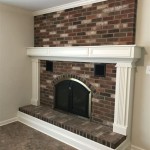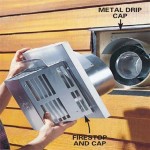How To Replace A Gas Fireplace Thermopile
A gas fireplace provides supplemental heat and ambiance to a home. A crucial component in many standing-pilot gas fireplaces is the thermopile. This device generates a small electrical current, powered by the pilot flame's heat, which is essential for operating the gas valve. When a thermopile fails, the fireplace may not stay lit or may not ignite at all. Replacing a thermopile is a task that a homeowner can perform, provided they understand the proper procedures and safety precautions. This article will provide a detailed guide for replacing a gas fireplace thermopile.
Important Safety Precautions: Before beginning any work on a gas fireplace, it is imperative to prioritize safety. Always turn off the gas supply to the fireplace. This is typically accomplished by locating the gas shut-off valve, often situated near the fireplace or in the basement. Ensure the fireplace is completely cool before proceeding. Disconnect the electrical power to the fireplace if it is equipped with an electronic ignition or blower. Keeping a carbon monoxide detector nearby is also a prudent measure. If there is any doubt about one’s ability to safely perform this task, it is recommended to contact a qualified gas fireplace technician. Working with gas carries inherent risks, and safety should always be the paramount concern.
Diagnosing a Faulty Thermopile
Before replacing the thermopile, it is important to confirm that it is indeed the source of the problem. Several reasons can prevent a gas fireplace from functioning correctly, and a faulty thermopile is just one possibility. A multimeter is the tool necessary to test the thermopile's output voltage. The typical output of a functioning thermopile is between 650 and 750 millivolts (mV) when the pilot flame is burning steadily on it. If the reading is significantly lower, the thermopile is likely failing and needs replacement.
Begin by locating the thermopile, which is usually positioned near the pilot light assembly. It is a slender, rod-like component with two wires connected to it. First, ensure that the pilot light is lit and has been burning for several minutes. This allows the thermopile to heat up and generate voltage. Set the multimeter to measure DC millivolts (mV). Disconnect the two wires from the thermopile terminals. Attach the multimeter probes to the thermopile terminals, one probe to each terminal. Observe the reading on the multimeter. If the reading is below the specified range (typically below 600 mV), the thermopile is likely faulty.
Other potential causes for a malfunctioning gas fireplace should be ruled out. A dirty pilot light assembly can affect the flame's ability to properly heat the thermopile. Clean the pilot light orifice with a small wire or compressed air. Check the connections between the thermopile and the gas valve. Loose or corroded connections can impede the flow of electricity. Sometimes, a faulty gas valve can mimic the symptoms of a bad thermopile. If the thermopile tests within the correct range and the fireplace still fails to function, the gas valve may be the culprit, requiring professional diagnosis and repair.
Tools and Materials Required
Having the necessary tools and materials on hand before starting the replacement process will streamline the procedure and minimize interruptions. The following items are typically needed:
*New Thermopile:
Ensure the replacement thermopile is the correct model for the specific fireplace. Refer to the fireplace's manual or the markings on the old thermopile to identify the compatible part. *Screwdrivers:
A set of screwdrivers, including both flathead and Phillips head, will be necessary to remove screws and access the thermopile. *Wrench or Pliers:
Depending on the fireplace design, a wrench or pliers may be needed to loosen or tighten fittings connected to the thermopile or pilot assembly. *Multimeter:
A multimeter is essential for testing the old thermopile and verifying the new thermopile's output. *Wire Strippers/Crimpers:
These tools may be required to prepare the wires for connection to the new thermopile. *Wire Connectors:
Wire connectors, such as wire nuts or crimp connectors, will be used to securely connect the thermopile wires to the fireplace's wiring. *Vacuum Cleaner or Brush:
A vacuum cleaner or small brush can be used to clean any debris or dust from the pilot light assembly area. *Safety Glasses and Gloves:
Protect eyes and hands by wearing safety glasses and gloves throughout the replacement process.Step-by-Step Replacement Procedure
With the necessary tools and materials assembled and all safety precautions observed, the thermopile replacement can begin. Follow these steps carefully:
1. Access the Thermopile: The location of the thermopile will vary depending on the gas fireplace model. Typically, it is located behind a decorative front panel or behind the fireplace grate. Consult the fireplace's owner's manual for specific instructions on accessing the pilot light assembly.
2. Disconnect the Old Thermopile: Once the thermopile is accessible, carefully disconnect the two wires connected to its terminals. Note the orientation of the wires or take a photograph before disconnecting them to ensure proper reconnection later. Use a screwdriver or wrench to loosen any mounting hardware holding the thermopile in place. Gently remove the old thermopile.
3. Install the New Thermopile: Position the new thermopile in the same location as the old one. Secure it in place using the mounting hardware that was removed earlier. Connect the wires to the terminals of the new thermopile, ensuring they are connected in the same orientation as they were on the old thermopile. Use wire connectors to create secure and reliable connections. Gently tug on the wires to confirm they are firmly attached.
4. Reassemble the Fireplace: Reinstall any panels, grates, or other components that were removed to access the thermopile. Ensure all screws and fasteners are properly tightened. Double-check that all wires are connected correctly and that there are no loose connections.
5. Test the New Thermopile: Before relighting the pilot light, use a multimeter to verify the new thermopile's output voltage. Light the pilot light according to the fireplace's instructions. Allow the pilot light to burn for several minutes to heat the thermopile. Disconnect the wires from the gas valve terminals and connect the multimeter probes to the terminals. The multimeter should read within the acceptable voltage range (typically 650-750 mV). If the voltage is within range, reconnect the wires to the gas valve terminals.
6. Relight the Pilot Light: Follow the manufacturer's instructions to relight the pilot light. This usually involves pressing and holding the pilot button while simultaneously igniting the pilot flame. Once the pilot light is lit, continue holding the button for the recommended time to allow the thermopile to heat up and stabilize. Release the button and ensure the pilot light remains lit. If the pilot light goes out after releasing the button, there may still be an issue with the thermopile, gas valve, or other components.
7. Test the Fireplace Operation: After the pilot light is burning steadily, turn on the fireplace to test its operation. Observe the main burner ignition and the overall performance of the fireplace. If the fireplace functions correctly, the thermopile replacement was successful. If the fireplace still fails to operate, further troubleshooting may be necessary.
Important Considerations: When selecting a replacement thermopile, ensure it is compatible with the specific make and model of the gas fireplace. Using an incompatible thermopile can lead to improper operation or even damage to the fireplace. When connecting the wires to the thermopile terminals, ensure the connections are secure and free from corrosion. Loose or corroded connections can impede the flow of electricity and affect the thermopile's performance.
Furthermore, after replacing the thermopile, monitor the fireplace's operation for any signs of malfunction. Pay attention to the pilot light's stability, the main burner's ignition, and the overall heating performance. If any issues arise, such as the pilot light going out frequently or the main burner failing to ignite, consult a qualified gas fireplace technician for further assistance.

Gas Fireplace Won T Stay Lit Magic Touch Mechanical

Thermopile Removal Gas Fireplace Doityourself Com Community Forums

Gas Fireplace Missing Thermopile

Identifying Gas Fireplace Parts Www Mygasfireplacerepair Com

Know How To Replace A Gas Fireplace Thermocouple

Gas Fireplace Won T Stay Lit Magic Touch Mechanical

Fireplace Won T Stay Lit This Is How You Fix It

How The Fireplace Thermopile System Is Wired

Diy Gas Fireplace Won T Light How To Clean Your Thermopile And Thermocouple

Thermocouple Vs Thermopile A Complete Comparison Linquip
Related Posts

